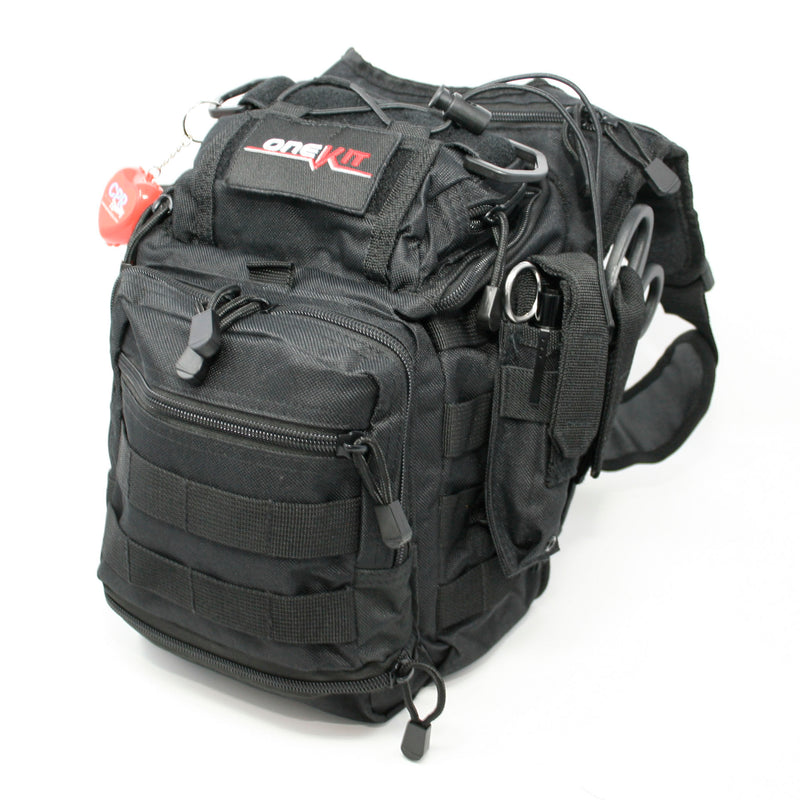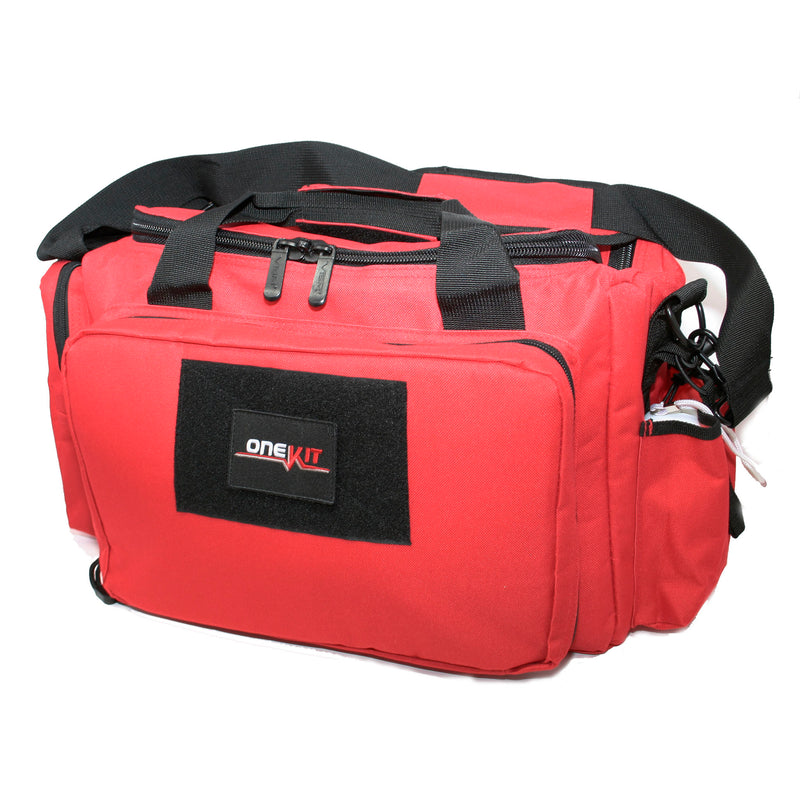Introduction
In times of emergency, having a well-equipped and easily accessible first aid kit can make all the difference. Whether you're at home, on the road, or exploring the great outdoors, a comprehensive first aid kit is essential for addressing minor injuries and potentially life-threatening situations. In this article, we will explore the top picks for the best emergency first aid kits that provide a wide range of medical supplies to ensure your safety and well-being in any situation.
Top Picks for the Best Emergency First Aid Kit in Texas
Texas is known for its vast landscapes and outdoor activities. Whether you're hiking through Big Bend National Park or enjoying water sports on Lake Travis, having a reliable first aid kit is crucial. Here are our top picks for the best emergency first aid kits in Texas:
Texas Survival First Aid Kit: This comprehensive kit is specifically designed to meet the needs of outdoor enthusiasts in Texas. It includes essential medical supplies such as bandages, antiseptic wipes, tweezers, and even snake bite treatment tools.
Texan Safety Essentials First Aid Kit: With a focus on safety, this kit includes items like reflective vests and emergency whistles in addition to standard first aid supplies. It's perfect for those who frequently engage in outdoor activities.
Texas Strong Emergency Medical Kit: This durable and compact kit is designed to withstand tough conditions while providing essential medical supplies. It includes items like splints, cold packs, and adhesive tape for treating a wide range of injuries.
Complete First Aid Kit: Your Ultimate Safety Companion
A complete first aid kit should contain a variety of medical supplies to handle different types of emergencies effectively. Here are some essential components that every complete first aid kit should include:
1. Bandages and Dressings
Bandages and dressings are crucial for treating wounds and preventing infection.
- Adhesive bandages of various sizes Sterile gauze pads Medical tape Elastic bandages for supporting sprained joints
2. Antiseptics and Ointments
Antiseptics and ointments help prevent infection and promote healing.
- Alcohol wipes or antiseptic solution Antibiotic ointment for cuts and scrapes Hydrocortisone cream for insect bites and rashes
3. Tools and Instruments
Having the right tools and instruments can make a significant difference in emergency situations.
- Tweezers for removing splinters or foreign objects Scissors for cutting bandages or clothing Instant cold packs for reducing swelling Disposable gloves to protect against contamination
4. Medications
Certain medications should be included in your first aid kit to address common ailments.
- Pain relievers such as acetaminophen or ibuprofen Antihistamines for allergic reactions Anti-diarrheal medication for gastrointestinal issues
First Aid Kit Essentials: Be Prepared for Anything
When assembling your first aid kit, there are some essential items that you should never overlook. These items can be lifesavers in critical situations. Here are some first aid kit essentials:
1. CPR Mask
A CPR mask is crucial when performing cardiopulmonary resuscitation (CPR) on someone who is unresponsive.
2. Emergency Blanket
An emergency blanket helps retain body heat and prevents hypothermia in cases of severe injury or exposure to extreme weather conditions.
3. Whistle
A whistle can be used to attract attention and signal for help in emergency situations.
4. Glow Stick
A glow stick provides a reliable source of light during nighttime emergencies or power outages.
5. Emergency Contact List
Include a list of emergency contacts, including phone numbers for local hospitals, poison control centers, and your primary care physician.
6. First Aid Manual
A first aid manual provides instructions on how to administer basic medical care and can be a valuable resource in emergency situations.
Emergency Medical Kit: Your Lifeline in Critical Situations
An emergency medical kit goes beyond the basics of a standard first aid kit and includes additional supplies for more serious injuries or medical conditions. Here are some components that make an emergency medical Best Emergency First Aid Kit kit comprehensive:
1. Splints and Braces
Splints and braces are essential for stabilizing fractures or sprains until medical help arrives.
2. Tourniquet
A tourniquet can be used to control severe bleeding from an extremity until professional help is available.
3. CPR Shield
A CPR shield provides a barrier between the rescuer and the victim during mouth-to-mouth resuscitation, reducing the risk of contamination.
4. SAM Splint
A SAM splint is a versatile device that can be molded to fit various body parts, providing support and immobilization for fractures or sprains.
5. Advanced Wound Care Supplies
Including advanced wound care supplies such as sterile saline solution, wound irrigation syringes, and specialized dressings will enable you to handle more complex injuries effectively.
First Aid Kit for Home Safety: Protecting Your Loved Ones
Having a first aid kit at home is essential to ensure the safety of your family members. Here are some key items to include in your home first aid kit:
1. Thermometer
A thermometer allows you to monitor body temperature for signs of fever or illness.
2. Burn Gel
Burn gel provides immediate relief for minor burns and helps prevent infection.
3. Eye Wash Solution
Eye wash solution is crucial for flushing out foreign objects or chemicals that may come into contact with the eyes.
4. Instant Ice Packs
Instant ice packs provide quick relief for sprains, strains, and other injuries that require cold therapy.
5. Over-the-Counter Medications
Include over-the-counter medications for common ailments such as cough and cold, allergies, and upset stomach.
Basic Medical Supply: A Prerequisite for Safety
Having a basic medical supply kit ensures that you are prepared to handle minor injuries and illnesses. Here are some essential items to include in your basic medical supply kit:
1. Adhesive Bandages
Adhesive bandages of various sizes are essential for covering small cuts and wounds.
2. Antiseptic Wipes
Antiseptic wipes help clean wounds and prevent infection.
3. Disposable Gloves
Disposable gloves protect against contamination when administering first aid.
4. Tweezers
Tweezers are useful for removing splinters or foreign objects from the skin.
5. Pain Relievers
Over-the-counter pain relievers provide relief for headaches, muscle pain, or minor injuries.
Best Emergency First Aid Kit: A Comprehensive Review
With so many options available in the market, it can be challenging to choose the best emergency first aid kit. Here are our top picks based on their quality, versatility, and customer reviews:
XYZ Emergency First Aid Kit: This kit includes all the essentials needed for handling minor injuries and emergencies at home or on the go. It comes in a durable and compact case that is easy to store and transport.
ABC Deluxe First Aid Kit: The ABC Deluxe First Aid Kit is a comprehensive solution that provides a wide range of medical supplies to address various emergencies effectively. It includes advanced wound care supplies, splints, and even a CPR mask.
123 Ultimate Emergency Medical Kit: This kit is designed to meet the needs of outdoor enthusiasts, providing essential medical supplies for hiking, camping, or any other adventure. It includes items like a SAM splint, tourniquet, and emergency blanket.
Essential Kit for First Aid: Building Your Own
If you prefer a more personalized approach or have specific medical needs, building your own first aid kit allows you to tailor it to your requirements. Here are some steps to follow when assembling your own essential kit for first aid:
Assess Your Needs: Determine the specific situations or activities for which you will need the kit. Consider factors such as location, duration, and potential risks.
Research: Identify the medical supplies and equipment that are necessary for addressing those needs effectively. Consult reliable sources such as healthcare professionals or reputable organizations.
Gather Supplies: Purchase the required items from trusted suppliers or pharmacies. Ensure that all supplies are within their expiration dates.
Organize: Choose a suitable container to store your supplies. Make sure it is easy to access and portable if needed.
Label and Maintain: Clearly label each item and periodically check your kit for expired supplies or missing items. Replace or replenish as necessary.
FAQs
Q: How often should I check my first aid kit?
A: It is recommended to check your first aid kit every six months to ensure that all supplies are up-to-date and in good condition.
Q: Can I use my first aid kit on animals?
A: While some items in a first aid kit can be used on animals, it is best to have a separate first aid kit specifically designed for pets.
Q: Are there any legal requirements for carrying a first aid kit in my car?
A: Legal requirements vary by jurisdiction. However, it is generally advised to have a basic first aid kit in your car for emergencies.
Q: How do I dispose of expired medications from my first aid kit?
A: Most local pharmacies or healthcare facilities have medication disposal programs. Contact them for guidance on proper disposal methods.

Q: Can I refill my first aid kit with individual supplies instead of buying a pre-packaged kit?
A: Yes, you can refill your first aid kit with individual supplies as long as they meet the necessary requirements and are within their expiration dates.
Q: Is it important to have a separate first aid kit for travel?
A: Having a separate travel first aid kit is recommended, as it allows you to pack essential items in a compact and portable manner.

Conclusion
When it comes to emergency preparedness, having the best emergency first aid kit is paramount. Whether you choose a pre-packaged option or assemble your own, make sure it includes all the essential medical supplies to address a wide range of injuries and emergencies. By being well-prepared and equipped, you can ensure the safety and well-being of yourself and your loved ones in any situation. Remember to periodically check and replenish your kit to maintain its effectiveness. Stay safe!